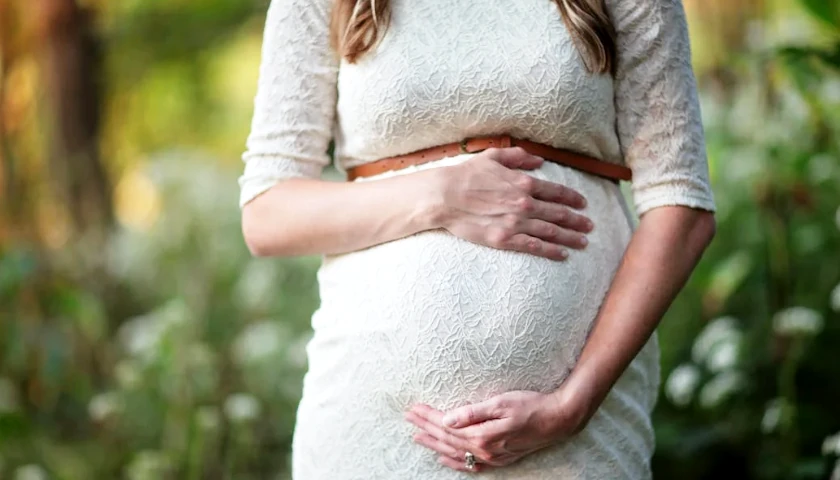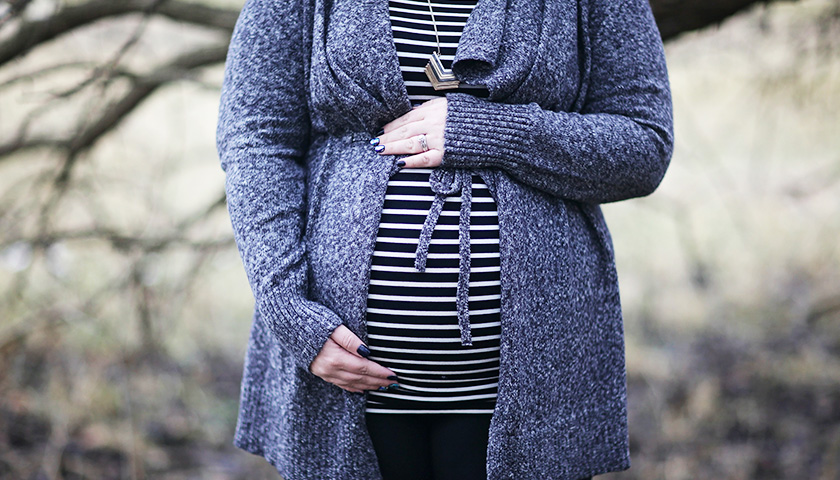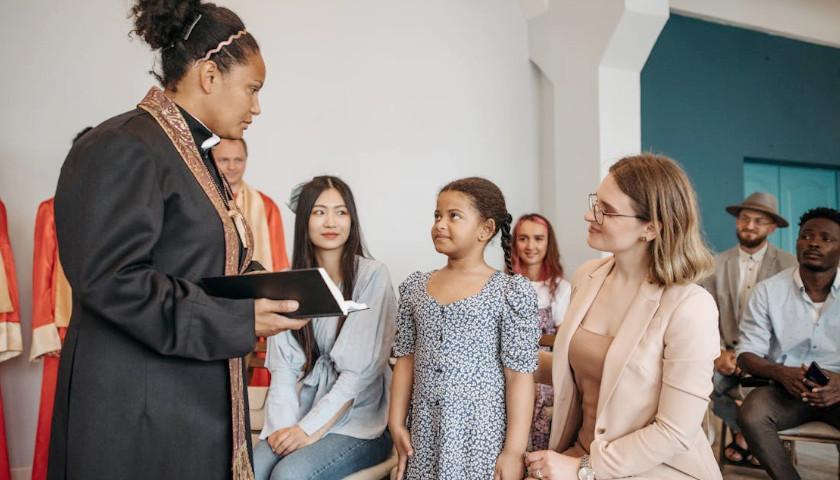by Cadence McManimon
I wrote an article this past year detailing my experience of wearing exclusively dresses and skirts, due to symptoms of my third pregnancy. I am now on the other side of this experience—I delivered my third son and am healing very well postpartum. To my own surprise, I find I have not gone back to wearing my old favorite jeans! (Teenage me would gasp in shock.)
I continue to wear traditional clothes most of the time, to the point that I own mostly dresses now. I find myself looking back on the surprising discoveries this time has taught me. I used to have a myriad of reasons why I didn’t want to wear skirts, of course. Most women do. But now, I have experienced firsthand how inconsequential these arguments actually are. There are far fewer practical objections to traditional dressing than many of us think. Let’s go through three common reasons women cite as to why they don’t want to wear dresses, and why in reality, this type of wardrobe is still perfectly accessible.
(Of course, I need to preface by saying that clothing is just clothing. Dresses or jeans, skirts or slacks, doesn’t make or break anyone’s interior character. Individually, we are all entitled to our own opinions and fashion choices. As a collective society and culture, however, we might consider how we are impacted by our dress and whether it presents a message we desire to show to the outside world.)
“Dresses are so restrictive!” Ah yes, the battle cry of the active lifestyle. This is likely the most common objection to dresses. I too lead an active lifestyle! These days, I do all of my daily activities in a dress just as easily as if I wore pants. I regularly work out, garden, hike, and run after three little boys.
Wearing skirts hasn’t impeded me at all, and honestly, this shocked me. I had expected to be restricted by long skirts. Of course, there have been times in my life when pants have been objectively necessary, including working with livestock, running heavy machinery, or being outside in below zero temperatures. But for the average woman in our society these days, dresses are functionally comparable to leggings and jeans.
What many of us, including my past self, fail to realize is that not all dresses are created equal. We shouldn’t feel that we need to change our lifestyle to match dresses when, in reality, we can choose dresses that fit our existing lifestyles. I don’t wear a ballgown in my garden—I wear a utility skirt with massive pockets. My sister goes to the gym in athletic tennis dresses. Nursing dresses are favorites among neighborhood moms.
This is very much like dressing in a career uniform: construction workers wear jeans, doctors wear scrubs, and professors wear slacks. Men (and women) pick clothes to fit the job. Women can also pick dresses to fit our lifestyles. Many women are unaware of this, possibly because we equate the idea of dresses with a Victorian-style corset and petticoats. Today, we have virtually unlimited options of dress styles. We should be making more use of them!
“I look like I’m wearing a costume.” Similar phrases include “it’s like I’m wearing someone else’s clothes” or “it feels overdressed.” The general statement is that wearing dresses can make us abnormal. This is not an actual obstacle to wearing dresses, but more of a psychological phenomenon.
Why do we feel out of place in a perfectly normal garment? Dresses are not inherently fancy or costumey, but they often feel that way to women who are used to wearing leggings all the time. I certainly felt this way when starting out, even when I was home alone! This is because what we consider normal is the result of one thing: habit.
If we are in the habit of wearing sweatpants or leggings all the time, anything else will feel like a costume, even when we’re not out and about in society. So, we find it easier to stay in our clothing comfort zones. We like the status quo simply because it is familiar. Changing up our closets makes us feel unfamiliar and insecure.
But this feeling is simply a learning curve. When trying something new, even as inconsequential as a clothing style, our brains are still learning the ropes. When this becomes habit instead of novelty, it will feel natural. For instance, I had to switch exclusively to dresses and skirts quite literally overnight, and it felt totally foreign. But just a few months later, these “costumey” clothes became familiar, and I stopped thinking about it.
In fact, just a couple of weeks ago, I put on a pair of jeans for the first time since November, and I felt like these old favorites belonged to someone else! All of a sudden, because my habits have changed, what used to feel comfortable now feels foreign. So, what feels normal to us is simply a reflection of what we choose to regularly wear. It’s up to us what we want “normal” to look like.
“I’m just a jeans and T-shirt type of girl.” This was me to a T. I was a teenage tomboy and thought that dresses just weren’t for me. This mindset hung on well after college and into my adult life. Last year, when I had to give up pants entirely, I struggled with the feeling of looking so unlike myself. I didn’t feel girly enough for dresses!
I think this is a common aversion that turns women away from traditionally feminine clothes. But is this really how our personalities truly are, or is it more a result of social conditioning? We associate dresses with overt girlishness. We are told by conventional media that being feminine is the same as being weak and that it’s better to be aggressive, strong, and masculine. Advertisements, media, and politics have been pushing this idea for decades, so it’s no surprise fashion followed suit.
But to know who we truly are as women, we need to look at how we feel without the input of social custom. What did our childhoods look like? What “type” of girls were we then? I remember my sisters and I practically lived in costume dresses lovingly sewn by my grandmother.
Back then, it never crossed my mind whether I was too much of a tomboy to wear dresses, or whether they were too girly for me. I simply liked wearing them and went on climbing trees, playing swords, and carrying around baby farm animals. Those princess gowns bore many stains and rips from beloved use.
What happened to this freedom of thought and action? Somehow, as I grew up, I lost the idea that I could wear what I liked simply because I liked it. How many women share the princess dress phase in their childhoods? When and why did we abandon this innate delight in something so innocent? I think it’s worth embracing again.
Dressing traditionally isn’t as far out of reach as many of us think. And I’m not the only one who’s noticed. In recent years, there has been a resurgence in embracing traditional clothing once again. From the popular cottagecore aesthetic and the tradwife’s housedress all the way to the mainstream nap dress, women are turning more and more to the styles of yesteryear. Perhaps we are recovering the practicality of it, or unveiling a romantic nostalgia for times long gone, or some of each. Whatever the case, it seems I am not the only woman to rediscover what we gave up in trading skirts for slacks.
– – –
Cadence McManimon is a published author, former special education teacher, and now a wife and mother. She has too many houseplants, plenty of artsy projects, and not enough pens that work! (Doesn’t everyone?) Her novels Name Unspoken and The Lily Girl are available at her website cadencemcmanimon.com. Her favorite things include crayons, sarcasm, Sherlock Holmes, and hearing from readers!






My Wife (there is a term liberals hate) still likes to wear a dress and I very much respect her for that. One of my favorite photos from this year is her running a string trimmer wearing a dress and rubber chore boots.